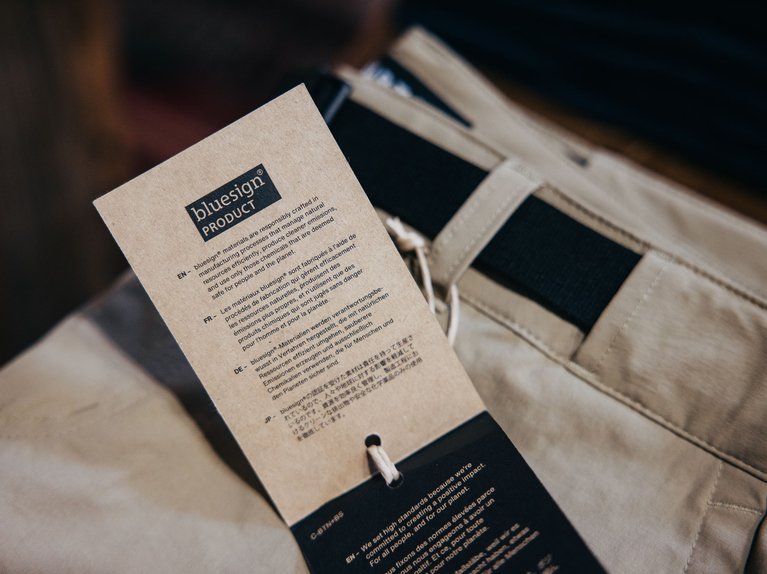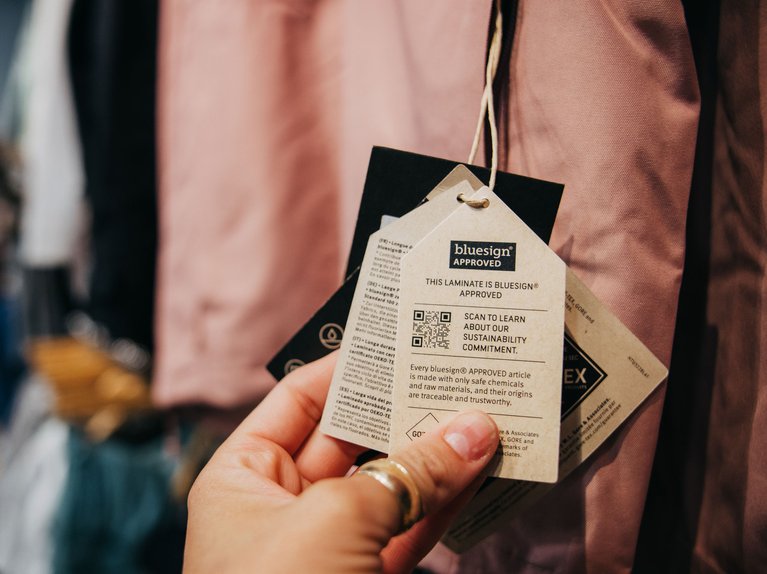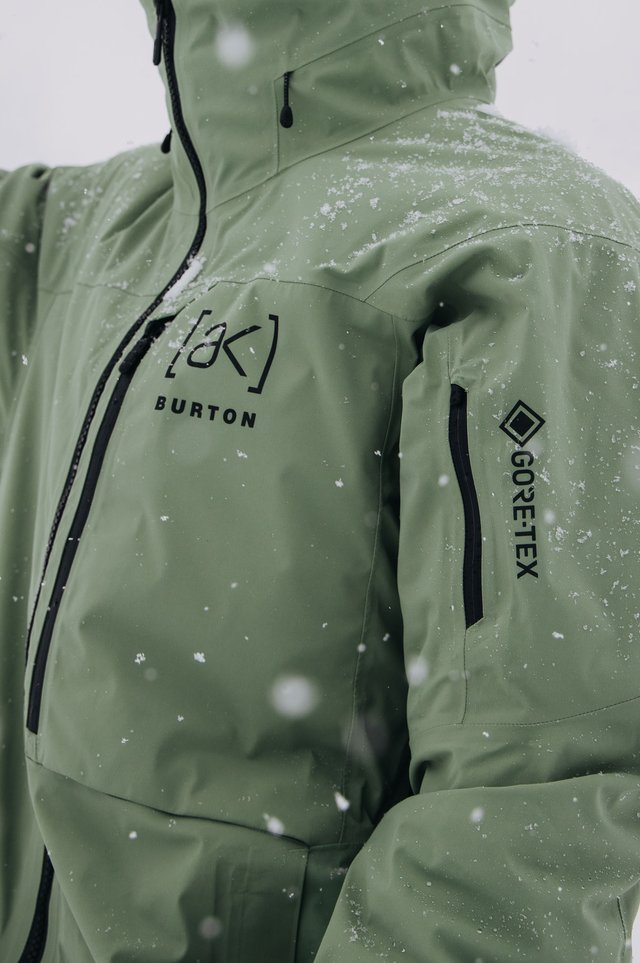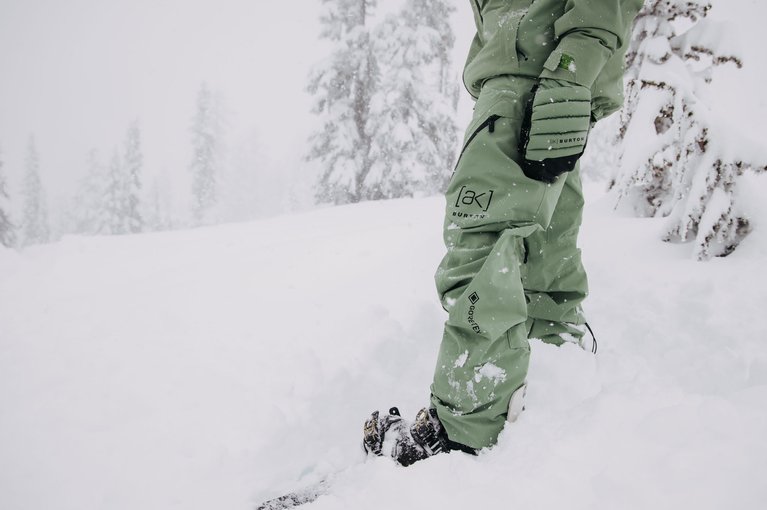We're Giving Harmful Chemicals the Boot
Burton’s Approach to Chemicals Management


The vibrant colors in your snowboarding jacket. The cozy texture of your base layer. The all-day waterproofing magic of your snow pants. Chemical treatments are partly responsible for helping your gear look and perform its best.
But the science doesn’t lie. Many commonly used chemicals harm the planet and endanger human health. While current regulations are making progress on consumer safety, experts say they don’t go far enough. To feel confident about the chemistry in our supply chain, we have to go above and beyond what the law requires.
And that’s exactly what we’ve been doing. Burton invests in cleaner, safer chemical treatments that exceed regulated thresholds and are backed by independent testing, strong supplier relationships and third-party certification. Without compromising the style and performance you know and love, we’ve implemented this strategy to protect you and your fellow riders, factory workers, and our environment. Because it’s the right thing to do.
Holding Ourselves to a Higher Standard

Burton believes that every person who interacts with our supply chain, from start to finish, deserves protection from harmful chemicals. Without deeper transparency into how and where materials are sourced, even the most well-meaning brands can become part of the problem.
While regulations like EU REACH and California Proposition 65 address the most visible health impacts to consumers, they do not protect factory workers, their communities, or adjacent waterways, air, soil, and wildlife. Most chemicals management programs are focused on testing the finished product to comply with regulations - an approach that doesn’t reveal the whole story, making “invisible” harms particularly difficult to trace and measure.
“Bad chemistry presents dangers to users, workers and the environment,” says Kevin Myette, director of global brand services at bluesign®, a global certification body focused on chemical safety. “Burton has understood this critical reality for a very long time and for this reason has been one of the longest partners of the industry-leading bluesign® SYSTEM.”
We refuse to let gaps in regulatory oversight slow our progress. We are proud to hold ourselves accountable to a higher standard across the supply chain.
bluesign® – Burton’s Partner in Safer Chemistry


Ever seen a bluesign® label on a hangtag (or product page) and wondered what it meant? In a crowded market rife with greenwashed environmental claims, the bluesign® label is one you can actually trust.
bluesign® is a global certification program that ensures chemical integrity across the textile supply chain. Not only does bluesign® set science-backed chemical thresholds - always evolving to meet the latest science - bluesign® also cultivates strong partnerships with the chemical suppliers, manufacturers, and brands in their system, ensuring a system of accountability and continuous improvement through regular auditing and customer services. The bluesign® system also has requirements for water, waste, emissions, and fair labor throughout the supply chain.
“Preventing chemical problems before they ever become problems—the strategy of the bluesign® SYSTEM—protects the end user as well as supply chain workers and the environment,” adds Kevin.
Over 13 years ago, Burton became a bluesign SYSTEM partner and began implementing the bluesign® Restricted Substances List (or RSL) – the strictest RSL in the industry, whose thresholds far exceed regulatory requirements. Since then, they have become a critical partner to us. Together, we developed the first bluesign® winter gloves, bringing new materials into the scope of the bluesign® SYSTEM.
“Burton products that have bluesign® APPROVED materials, or have become full bluesign® PRODUCTS, represent the pinnacle of chemical integrity,” says Kevin, “They have prevented unwanted substances from entering any part of the supply chain.”
As of 2024, over 60% of Burton apparel and outerwear have achieved bluesign® PRODUCT certification and 90% of our materials are bluesign® APPROVED. We aim to reach 100% for both products and materials, ideally in the not-too-distant future.
People and Planet Impact at Burton

In addition to our strong partnership with bluesign®, we have established material and fair labor goals that address safety from harmful chemicals throughout the supply chain.
- Raw materials - ensuring input materials are produced with safe chemistry
- Organic Cotton and Responsible Wool address the use of chemical fertilizers, pesticides, and water management at the farm level
- Input stream management with the bluesign® SYSTEM guarantees safe manufacturing by removing hazardous chemicals before they enter the supply chain.
- Manufacturing - ensuring that the chemicals used in the manufacturing phase adhere to strict chemical standards
- Adherence to the bluesign® black list
- Members of the Leather Working Group (LWG), a member-based association that uses the ZDHC Manufacturing Restricted Substances List (MRSL), one of the most rigorous standards in use today. We are on track to source 100% of our leather from LWG tanneries that follow strict environmental and manufacturing standards by 2024.
- Accredited members of The Fair Labor Association (FLA) which provides human rights oversight, advocates for living wages, and seeks protections for worker wellbeing.
- Strong supplier partnerships and chemical management, emissions, water, and waste data collection through industry tools like the Higg FEM
- Consumer - ensuring chemical safety in finished products
- Adherence to the bluesign® Restricted Substances List (RSL), which spells out the quantities and thresholds for safe chemistry in a finished product.
- Although not all suppliers in our network are bluesign system partners yet, all suppliers and materials are in scope for testing against the bluesign® RSL.
Forever Chemicals, Never Again


We can’t talk about chemicals management without addressing the global problem of forever chemicals (also known as PFAS or per-/polyfluoroalkyl substances). As the name suggests, forever chemicals never break down, and present serious risks to health and the environment. Burton’s efforts to ditch PFAS for good are underway: we’re aiming to be 100% free of intentionally added PFAS by 2026. It’s a complicated topic that deserves a full-length explanation—check out this related blog post if you’re curious about our progress.
What’s Next for Clean Chemistry?
As Burton progresses on our clean chemistry journey, we’re looking to peer brands and supply chain experts to help us reimagine snowsports’ relationship with chemicals. Burton has high hopes for what the new Clean Chemistry and Materials Coalition from the Outdoor Industry Association can achieve. The more companies that commit to this work, the faster we can all say goodbye to harmful chemicals for good.